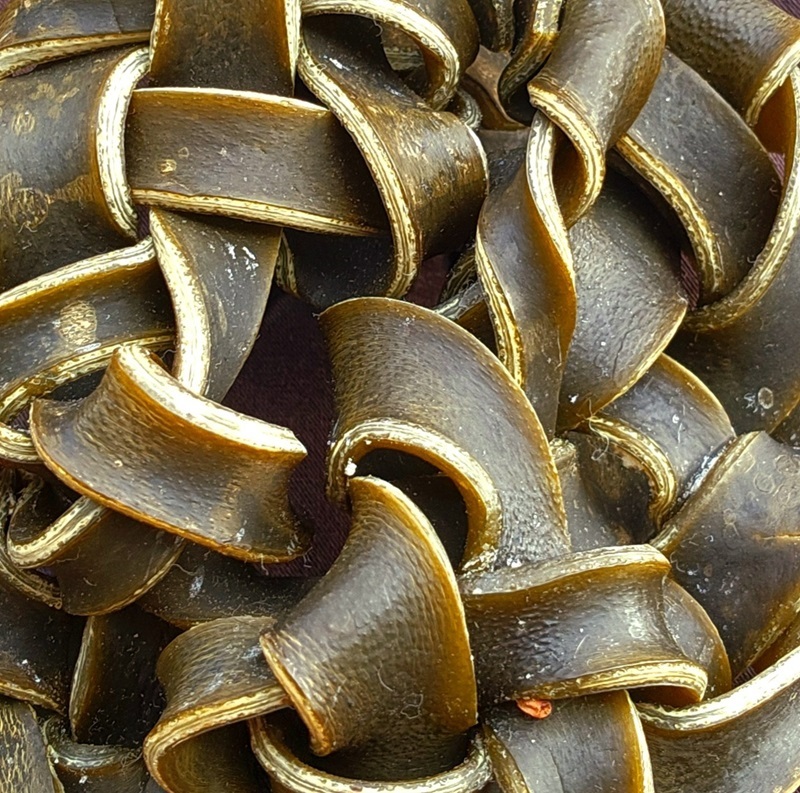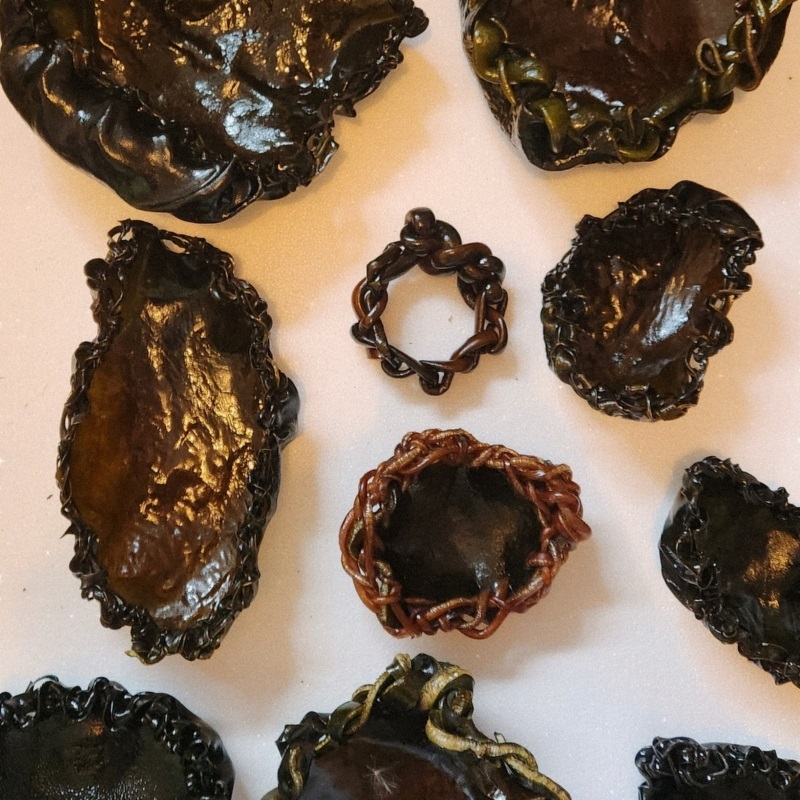Riding a wave of kelp creativity
Ashley Smyth
12 June 2024, 4:16 AM
 Judith Stanley is the woman behind The Kelpery. Photo: Ashley Smyth
Judith Stanley is the woman behind The Kelpery. Photo: Ashley SmythWhen it comes to knitting, weaving and sculpting - kelp isn’t usually a crafter’s first port of call.
But since spending her days beach-combing the Kāpiti Coast during lockdown, Ōamaru newcomer Judith Stanley has been intrigued by the storm-cast seaweed, and what she can do with it.
“I've always been fascinated, I guess, and just watching it dry and buckle, and seeing some of those really big pieces, it just seemed to be a wasted resource sitting there on the beach,” she says.
“Taking it home and playing with it just seemed like a really good idea.”
Judith moved south from Kāpiti in November last year, and although she says she didn’t come for the kelp … it’s definitely making her want to stay.
“I didn't realise there was so much . . . but when I saw it, I thought, kelp city.
“I've just been going crazy for the last six months, hauling it in and molding it and making.”
She has started The Kelpery, “which at the moment is kind of a name and an idea”.
She is exploring kelp as an art practice, but also thinks there is untapped opportunity for enterprise. Making disposable plates is one idea she thinks has potential, and will be looking into further.
Moeraki and Kakanui are Judith’s favourite kelping grounds, and Ōamaru harbour also sometimes produces the goods, although she has to contend with the occasional possessive seal.
She has experimented with other seaweeds, but due to kelp’s longevity (it doesn’t rot as fast), and variations of thickness and malleability, it has become her weed of choice.
“It feels like it lends itself to a more interesting exploration, and structurally, I mean . . . even the colour I'm noticing, like, given that it's all kelp and there’s all these different colours, it's just so interesting.”
The kelp is moulded, shaped, woven, or knitted using blades and stipes to make vessels, baskets, bowls, bangles and baubles, and Judith’s newest favourite - light hangings.
“It's gorgeous in the light. I've been really enjoying it. Just the way the light plays with it,” she says.
Kelp needs to be processed quickly. Once Judith has collected it in her drybag and brought it home, she has about 48 hours before it begins to rot.
“It requires a lot of attention in a short amount of time. So you have to shape it while it’s still wet, and then allow for the fact that it’s going to shrink.”
The kelp needs the rot cut off, and then is washed with fresh water. Judith thinks about what she wants to make from it, and then she gets “stuck in”.
The beauty of kelp, she says, is if something doesn’t work out, she just throws it on the garden.
Once a piece of work has been made, it is preserved using wax, resin or polyurethane - she has decided the latter has the most longevity.
How long a piece will last is yet to be determined. The oldest piece she has is three years. However, it has been treated with wax, and is beginning to develop mould.
“My understanding, and from my experience with it, it would decay like harakeke or paper, that sort of thing. So like any other natural fibre.”
The Kelpery generated a lot of interest at the recent Waitaki Arts Trail, held at King’s Birthday Weekend, and Judith sold some pieces, but ended up giving just as much away, she said.
“Where to from here? Is my question.”

Woven kelp. Photo: supplied
Judith thinks Waitaki could be the “kelp capital of the world”.
“What I'm finding really, there's not a lot of people working in kelp, you know, across the board. I've come across two others in New Zealand that have used it as a medium for artworks, and that sort of thing, and playing with it. And there's a couple of others globally, but not a lot really.”
Experimenting with kelp is a world away from Judith’s day job as a writer of education resources. She also has a masters degree in creative writing.
What she loves about the kelp, is “there are no words involved. It’s all tactile”.
“What I've loved the most, is that it's kind of new territory.”
The Kelpery has a piece on display at Nelson’s Refinery ArtSpace, and a stall at the Lōemis Festival, which is running in Wellington this month.
Closer to home, there are some pieces in Ōamaru’s Grainstore Gallery.
“And then from there, I think I just do a bit of door knocking around galleries,” Judith says.
“I guess I want more people to see it, enjoy it, and just really appreciate the resource for what it is.”
Judith is hoping to run workshops around the uses of kelp, and invites people who are interested to get in touch by emailing [email protected]

Some The Kelpery creations. Photo: supplied




